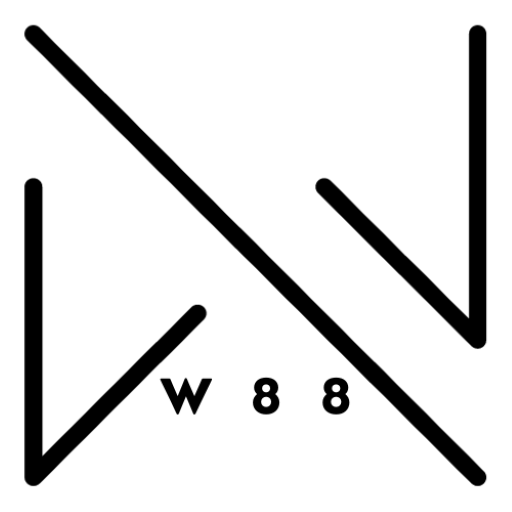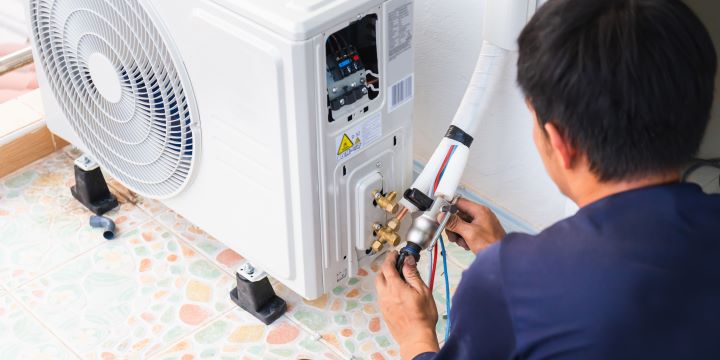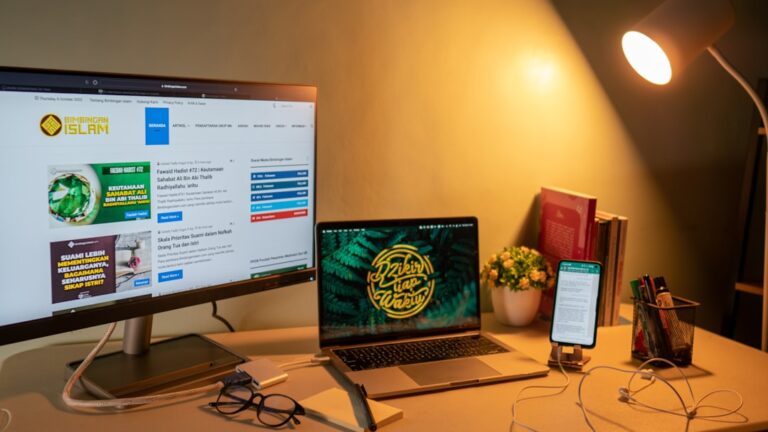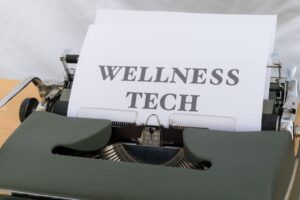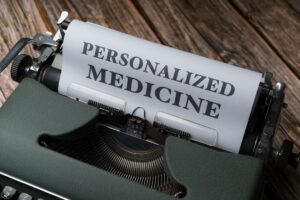Remote Patient Monitoring (RPM) has emerged as a transformative approach in the healthcare landscape, particularly in the wake of technological advancements and the increasing demand for efficient patient care. RPM refers to the use of digital technologies to collect medical data from patients in one location and transmit it to healthcare providers in another location for assessment and recommendations. This innovative method allows for continuous monitoring of patients’ health conditions, enabling timely interventions and reducing the need for frequent in-person visits.
As healthcare systems worldwide grapple with rising costs and an aging population, RPM offers a promising solution to enhance patient care while optimizing resource utilization. The concept of RPM is not entirely new; however, its adoption has accelerated significantly due to the COVID-19 pandemic, which necessitated a shift towards telehealth solutions. Patients and providers alike have recognized the potential of RPM to maintain continuity of care while minimizing exposure risks.
By leveraging various devices such as wearable sensors, mobile applications, and telecommunication tools, RPM facilitates real-time data collection and communication between patients and healthcare professionals. This paradigm shift not only empowers patients to take an active role in managing their health but also equips providers with valuable insights to make informed clinical decisions.
Key Takeaways
- RPM allows healthcare providers to monitor patients’ health remotely, leading to improved patient outcomes and reduced healthcare costs.
- Patients benefit from RPM through increased convenience, better management of chronic conditions, and reduced hospital visits.
- RPM technology involves the use of devices such as wearable sensors and mobile apps to collect and transmit patient data to healthcare providers.
- RPM plays a crucial role in managing chronic diseases by enabling continuous monitoring and early intervention.
- Challenges to RPM adoption include data security concerns, reimbursement issues, and the need for provider and patient education.
The Benefits of RPM for Patients and Healthcare Providers
The benefits of Remote Patient Monitoring extend to both patients and healthcare providers, creating a symbiotic relationship that enhances the overall healthcare experience. For patients, RPM offers the convenience of receiving care from the comfort of their homes, which can significantly reduce the stress associated with hospital visits. This is particularly advantageous for individuals with chronic conditions who require regular monitoring.
By utilizing RPM, patients can track their vital signs, medication adherence, and other health metrics in real-time, fostering a sense of autonomy over their health management. Moreover, RPM can lead to improved health outcomes by enabling early detection of potential complications. When patients are monitored remotely, healthcare providers can identify concerning trends or anomalies in their data and intervene promptly.
This proactive approach not only helps in preventing hospitalizations but also enhances patient satisfaction as individuals feel more connected to their care teams. Additionally, RPM can reduce healthcare costs by minimizing unnecessary emergency room visits and hospital admissions, ultimately benefiting both patients and the healthcare system as a whole. For healthcare providers, RPM presents an opportunity to enhance efficiency and streamline workflows.
By automating data collection and monitoring processes, providers can allocate more time to direct patient care rather than administrative tasks. This increased efficiency can lead to better patient-provider relationships, as clinicians can focus on delivering personalized care based on real-time data insights. Furthermore, RPM allows for a broader patient reach, enabling providers to extend their services to individuals in remote or underserved areas who may otherwise lack access to specialized care.
How RPM Technology Works
The technology behind Remote Patient Monitoring is multifaceted, incorporating various devices and platforms designed to facilitate seamless data collection and communication. At its core, RPM relies on wearable devices such as smartwatches, fitness trackers, and specialized medical equipment that can monitor vital signs like heart rate, blood pressure, glucose levels, and oxygen saturation. These devices are equipped with sensors that capture health data continuously or at specified intervals, ensuring that healthcare providers receive accurate and timely information about their patients’ conditions.
Once the data is collected, it is transmitted securely to healthcare providers through cloud-based platforms or mobile applications. These platforms often feature user-friendly interfaces that allow both patients and providers to access health information easily. Advanced analytics tools may also be integrated into these systems to interpret the data collected, identifying trends or potential issues that require attention.
This technological framework not only enhances the accuracy of health monitoring but also ensures that patients remain engaged in their care journey. In addition to hardware components, RPM technology often includes telecommunication features that facilitate virtual consultations between patients and healthcare providers. Video conferencing tools enable real-time discussions about health concerns, treatment plans, and lifestyle modifications.
This integration of technology fosters a holistic approach to patient care, where monitoring and communication work hand in hand to create a comprehensive health management strategy.
The Role of RPM in Chronic Disease Management
| Chronic Disease | Impact | RPM Benefits |
|---|---|---|
| Diabetes | High blood sugar, complications | Continuous monitoring, early intervention |
| Hypertension | Elevated blood pressure, heart disease | Regular tracking, medication adherence |
| Chronic Obstructive Pulmonary Disease (COPD) | Difficulty breathing, reduced lung function | Remote monitoring, symptom management |
| Heart Failure | Weak heart, fluid retention | Remote monitoring, medication compliance |
Remote Patient Monitoring plays a pivotal role in managing chronic diseases, which often require ongoing attention and intervention. Conditions such as diabetes, hypertension, heart disease, and respiratory disorders necessitate regular monitoring to prevent complications and ensure optimal health outcomes. RPM provides a framework for continuous observation of these conditions, allowing healthcare providers to tailor treatment plans based on real-time data.
For instance, diabetic patients can benefit from RPM by using glucose monitors that transmit readings directly to their healthcare team. This allows for timely adjustments in medication or dietary recommendations based on fluctuations in blood sugar levels. Similarly, individuals with hypertension can utilize blood pressure cuffs that automatically send readings to their providers, enabling proactive management of their condition.
By facilitating this level of monitoring, RPM empowers patients to take charge of their health while providing clinicians with the necessary tools to make informed decisions. Furthermore, RPM enhances patient education and self-management skills. Through regular interactions with healthcare providers via telehealth platforms, patients can receive guidance on lifestyle changes that may improve their conditions.
Educational resources can be shared digitally, ensuring that patients have access to information that supports their health goals. This collaborative approach not only fosters a sense of partnership between patients and providers but also encourages adherence to treatment plans and lifestyle modifications.
Overcoming Challenges and Barriers to RPM Adoption
Despite its numerous advantages, the adoption of Remote Patient Monitoring is not without challenges. One significant barrier is the digital divide that exists among different populations. While many individuals have access to smartphones and internet connectivity, others—particularly those in rural or underserved areas—may lack the necessary technology or skills to engage with RPM solutions effectively.
Addressing this disparity is crucial for ensuring equitable access to remote monitoring services. Another challenge lies in the integration of RPM into existing healthcare workflows. Many healthcare providers may be hesitant to adopt new technologies due to concerns about interoperability with current systems or the potential disruption of established practices.
To overcome this barrier, it is essential for healthcare organizations to invest in training programs that equip staff with the skills needed to utilize RPM effectively. Additionally, selecting user-friendly platforms that seamlessly integrate with electronic health records (EHR) can facilitate smoother transitions into remote monitoring practices. Regulatory concerns also pose challenges for RPM adoption.
Healthcare providers must navigate complex regulations regarding data privacy and security when implementing remote monitoring solutions. Ensuring compliance with standards such as HIPAA (Health Insurance Portability and Accountability Act) is paramount for maintaining patient trust and safeguarding sensitive information. As RPM continues to evolve, it will be essential for stakeholders to advocate for policies that support innovation while prioritizing patient safety and privacy.
The Future of RPM and its Impact on Healthcare
The future of Remote Patient Monitoring holds immense potential for reshaping the healthcare landscape. As technology continues to advance, it is likely that RPM will become increasingly sophisticated, incorporating artificial intelligence (AI) and machine learning algorithms to enhance data analysis capabilities. These advancements could lead to more personalized treatment plans based on predictive analytics that identify potential health risks before they escalate.
Moreover, the integration of RPM with other emerging technologies such as telemedicine and electronic health records will create a more cohesive healthcare ecosystem. This interconnectedness will enable seamless communication between patients and providers while ensuring that all relevant health information is readily accessible. As a result, healthcare delivery will become more efficient and patient-centered, ultimately improving health outcomes across diverse populations.
Additionally, as awareness of RPM grows among patients and providers alike, it is expected that demand for these services will increase significantly. Healthcare organizations may begin to prioritize investments in remote monitoring technologies as part of their strategic initiatives aimed at enhancing patient engagement and satisfaction. This shift could lead to broader acceptance of RPM as a standard practice within the healthcare industry.
Case Studies: Successful Implementation of RPM in Healthcare Settings
Several case studies illustrate the successful implementation of Remote Patient Monitoring across various healthcare settings, showcasing its effectiveness in improving patient outcomes and operational efficiency. One notable example involves a large hospital system that integrated RPM into its chronic disease management program for heart failure patients. By equipping patients with wearable devices that monitored vital signs such as weight and heart rate, the hospital was able to detect early signs of deterioration before they required hospitalization.
Through this proactive approach, the hospital reported a significant reduction in readmission rates among heart failure patients within six months of implementing RPM. Patients expressed increased confidence in managing their conditions due to regular check-ins with their care teams via telehealth consultations. This case highlights how RPM can enhance patient engagement while simultaneously alleviating strain on hospital resources.
Another compelling case study comes from a rural health clinic that adopted RPM for diabetic patients living in remote areas with limited access to specialized care. By providing patients with glucose monitors connected to a cloud-based platform, the clinic was able to track blood sugar levels remotely while offering virtual consultations with endocrinologists. As a result, patients experienced improved glycemic control and reported higher satisfaction levels due to reduced travel burdens associated with traditional in-person visits.
These case studies underscore the versatility of RPM across different healthcare settings and its potential for addressing unique challenges faced by diverse patient populations.
Considerations for Implementing RPM in Healthcare Practices
When considering the implementation of Remote Patient Monitoring within healthcare practices, several key factors must be taken into account to ensure success. First and foremost is the selection of appropriate technology that aligns with the specific needs of both patients and providers. It is essential to choose devices that are user-friendly and capable of accurately capturing relevant health metrics while ensuring compatibility with existing systems.
Training staff on how to effectively utilize RPM technologies is another critical consideration. Healthcare organizations should invest in comprehensive training programs that equip clinicians with the skills needed to interpret data collected through remote monitoring tools effectively. Additionally, fostering a culture of collaboration among interdisciplinary teams can enhance communication regarding patient care strategies informed by RPM data.
Patient engagement is also paramount when implementing RPM solutions. Healthcare providers should prioritize educating patients about the benefits of remote monitoring while addressing any concerns they may have regarding privacy or technology use. Encouraging active participation from patients in their care plans can lead to improved adherence and better health outcomes.
Lastly, ongoing evaluation of RPM programs is essential for identifying areas for improvement and ensuring that they continue to meet evolving patient needs. Regular feedback from both patients and providers can inform adjustments to workflows or technology choices that enhance the overall effectiveness of remote monitoring initiatives. In conclusion, Remote Patient Monitoring represents a significant advancement in healthcare delivery that offers numerous benefits for both patients and providers alike.
By leveraging technology to facilitate continuous monitoring and communication, RPM has the potential to transform chronic disease management while addressing some of the key challenges facing modern healthcare systems today. As stakeholders work collaboratively towards overcoming barriers to adoption and embracing innovative solutions, the future of RPM looks promising—ultimately paving the way for more personalized, efficient, and accessible healthcare for all.
FAQs
What is Remote Patient Monitoring (RPM)?
Remote Patient Monitoring (RPM) is a technology that allows healthcare providers to monitor patients outside of traditional clinical settings, such as in their homes. It involves the use of digital devices to collect and transmit patient data to healthcare professionals for monitoring and analysis.
What types of data can be monitored through Remote Patient Monitoring?
Remote Patient Monitoring can monitor a wide range of patient data, including vital signs such as blood pressure, heart rate, and oxygen levels, as well as glucose levels, weight, and medication adherence. It can also track symptoms and provide real-time alerts for potential health issues.
How does Remote Patient Monitoring benefit patients?
Remote Patient Monitoring allows patients to receive ongoing care and monitoring from the comfort of their own homes, reducing the need for frequent in-person visits to healthcare facilities. It can also help patients better manage chronic conditions and provide early detection of potential health issues.
How does Remote Patient Monitoring benefit healthcare providers?
Remote Patient Monitoring allows healthcare providers to monitor patients more closely and intervene earlier if any issues arise. It can also help in the management of large patient populations, improve patient outcomes, and reduce healthcare costs.
What are some examples of Remote Patient Monitoring devices?
Examples of Remote Patient Monitoring devices include blood pressure monitors, glucose meters, pulse oximeters, weight scales, and wearable activity trackers. There are also more advanced devices that can monitor ECG, respiratory rate, and other vital signs.
Is Remote Patient Monitoring secure and compliant with privacy regulations?
Remote Patient Monitoring systems are designed to be secure and compliant with privacy regulations, such as HIPAA in the United States. Data transmission is encrypted, and strict access controls are in place to protect patient information.
